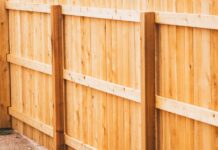Last Updated 1 month ago by Kenya Engineer
In the relentless battle against the natural degradation of materials, the construction and building industry relies on a wide range of techniques to extend the lifespan and ensure the structural integrity of its creations.
Among the most effective and widely used methods for protecting steel from corrosion are hot dip galvanizing, the use of zinc rich paints, and the use of continuously galvanized steel sheet. These three methods, while distinct in their application and properties, all leverage the unique protective qualities of zinc to shield steel from the damaging effects of corrosion.
The Science of Sacrificial Protection
Corrosion is an electrochemical process where a metal reverts to a more stable form, typically an oxide through oxidation. In the case of steel, this process is known as rust. The core principle behind zinc based corrosion protection is sacrificial protection or galvanic corrosion. Zinc is more electrochemically active than steel. When zinc and steel are in contact in the presence of an electrolyte ( sea water / rain ), the zinc corrodes preferentially, sacrificing itself to protect the steel. This provides a durable, long lasting barrier. Furthermore, as zinc oxidizes, it forms a dense, impervious layer of a zinc carbonate /hydroxide that further seals the steel from the environment. This dual action protection—sacrificial and barrier—is what makes zinc so effective as a corrosion protective.
Hot Dip Galvanizing: The Gold Standard for Structural Steel
Hot dip galvanizing is a process in which fabricated steel is immersed in a bath of molten zinc. The steel, which is carefully degreased, cleaned, fluxed and prepared, reacts with the molten zinc to form a series of 3 zinc-iron alloy layers, topped by a layer of pure zinc. This metallurgically bonded coating is extremely durable and resistant to mechanical damage.
The process ensures that the coating covers all surfaces, including complex shapes, and penetrates into recesses, providing complete and uniform protection.
This method is particularly suitable for large structural elements such as steel beams, columns, trusses, and rebar. The resulting zinc coating, typically 85-100 microns thick, is robust and self-healing. If the coating is scratched or damaged, the surrounding zinc will still provide sacrificial protection to the exposed steel. This attribute is critical for long-term infrastructure projects like bridges, high rise buildings, and industrial facilities where maintenance is difficult and costly. The longevity of hot dip galvanized steel is impressive, often providing decades of maintenance free service in most environments. Its economic value is significant, as the initial cost is often outweighed by the long term savings from avoiding repairs and replacement.
Zinc Rich Paints: Versatility and Repair
For situations where hot dip galvanizing is not feasible or for onsite repairs, zinc rich paints offer a flexible and effective alternative. These paints contain a high concentration of zinc dust or flake, typically 92-95% by weight in the dry film. When applied to a cleaned steel surface, the zinc particles within the paint provide similar cathodic protection as a galvanized coating. The paint acts as a sacrificial layer, corroding before the underlying steel as well as a barrier to the external environment.
Zinc-rich paints are often used to repair damaged hot dip galvanized coatings or to protect steel components that are too large or awkwardly shaped to be dipped in a galvanizing kettle. They are also a common choice for protecting welds and bolt connections on pre-galvanized structures. While the performance of zinc rich paints can vary depending on the formulation and application quality, they provide a strong line of defense against corrosion and are a vital tool in the corrosion protection toolkit. Their ease of application makes them ideal for both new construction and maintenance projects, offering a convenient way to extend the life of steel structures in a variety of environments.
Continuously Galvanized Steel Sheet: Precision and Mass Production
Continuously galvanized steel sheet is a method used for flat steel products, such as roofing sheets, cladding and light gauge building frames. This process involves passing a coil of prepared steel through a molten zinc bath in a continuous, automated line. The result is a uniformly thin, tightly controlled zinc coating that is perfect for products requiring a consistent finish and formability. The zinc coating, typically much thinner than that of hot dip galvanized steel, is applied with a high degree of precision, ensuring a smooth surface ready for subsequent painting or forming. Following the galvanizing process an organic primer and topcoat are applied to add further protection and colour to the sheeting. In South Africa and Africa, brands such as Chromadek Ultim, Bluescope Colorbond Ultra and Safal Colourplus are available to the building industry.
This method is the backbone of the light frame steel construction industry. Continuously galvanized steel is used to produce durable and corrosion resistant materials for residential, commercial, and office buildings. For example, steel roofing panels and wall cladding benefit from the thin, uniform coating, which provides a long lasting and aesthetically pleasing finish. The process allows for mass production of consistent quality materials, driving down costs and making corrosion resistant steel accessible for a wide range of building applications. While the zinc coating is far thinner than in hot dip galvanizing, it is sufficient for the intended use and can be supplemented with paint coatings for enhanced durability and color.
Zinc coatings offer a multi-faceted defence against corrosion
Zinc-based coatings provide a powerful, multifaceted defense. Hot dip galvanizing offers a rugged, long lasting solution for heavy structural elements, providing unmatched durability and a self-healing barrier. Zinc rich paints serve as a flexible and essential tool for repair and for protecting components that are not suited for hot dip galvanizing. Continuously galvanized steel sheet provides a cost effective and precise solution for a wide array of building materials, enabling the mass production of durable, corrosion resistant products. Together, these three zinc based coating systems form a comprehensive package to builders that protect steel structures from the relentless forces of nature, ensuring the longevity, and sustainability of the buildings.

























